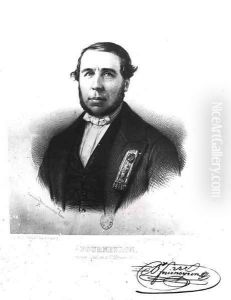Louis Emmanuel Soulange-Teissier Paintings
Louis Emmanuel Soulange-Teissier was a French artist born in 1826 and passed away in 1887. His life and work are situated within the 19th century, a period marked by significant transformations in European art, with movements such as Romanticism, Realism, and Impressionism emerging and evolving. Despite not being widely recognized today among the pantheon of famous artists from this era, Soulange-Teissier's contributions to the art world, particularly in France, provide a fascinating glimpse into the practices and thematic concerns of his time.
Soulange-Teissier's artistic journey commenced in an era when art academies and salons wielded considerable influence over artists' careers, dictating the styles and subjects deemed acceptable for public display and critical acclaim. Within this context, he developed a distinctive style that amalgamated traditional techniques with emerging trends, reflecting the broader shifts occurring in the art world. His work often explored themes of nature, human emotion, and the beauty found in everyday life, resonating with the Romantic idealization of nature and the Realist commitment to depicting the world truthfully.
Throughout his career, Soulange-Teissier participated in various exhibitions, showcasing his work alongside contemporaries who would go on to define the era's artistic legacy. Despite the competitive nature of these exhibitions, he managed to garner attention and acclaim for his unique approach to painting, which emphasized the interplay of light and color. This aspect of his work anticipated some of the techniques that would later be celebrated in Impressionist painting, suggesting that Soulange-Teissier was ahead of his time in experimenting with visual effects.
Soulange-Teissier's legacy, while not as prominent as that of his more famous peers, is preserved in the collections of several French museums and in the private collections of art connoisseurs who appreciate the subtle beauty and historical value of his work. His life story exemplifies the challenges and rewards of pursuing an artistic career in a rapidly changing cultural landscape, where the quest for innovation and individual expression often came into conflict with prevailing artistic norms. Through his paintings, Soulange-Teissier contributed to the rich tapestry of 19th-century French art, offering insights into the era's aesthetic preferences and cultural preoccupations.
